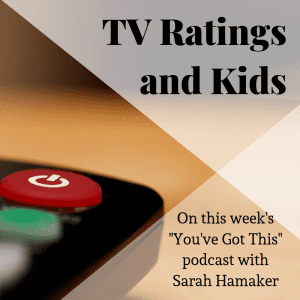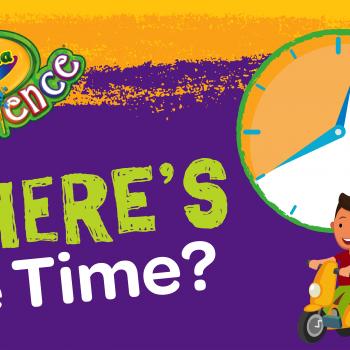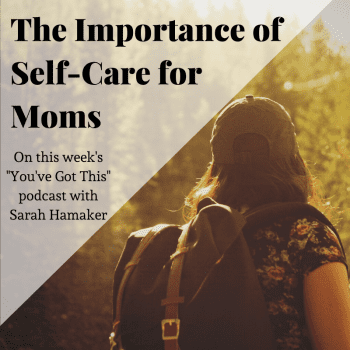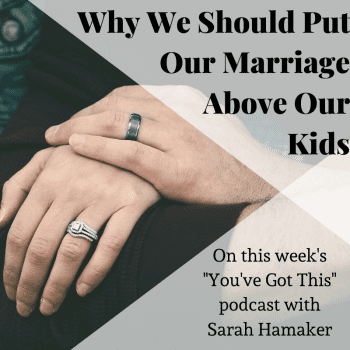 The following is an excerpt from my interview with Melissa Henson on my podcast, You’ve Got This.
The following is an excerpt from my interview with Melissa Henson on my podcast, You’ve Got This.
Melissa is program director for the Parents Television Council, a nonpartisan education organization advocating for responsible entertainment. She is a noted expert on entertainment industry trends and the how the impact of entertainment affects children and the American popular culture at large. She also directs the organization’s Advertiser Accountability Campaign, which encourages companies to sponsor family-friendly entertainment. Melissa previously supervised the research and program content analysis operations of the PT and produced a number of groundbreaking PTC studies that document the levels of graphic sex, violence and profanity on television. Some of those reports include: The Ratings Sham I & II, Dying to Entertain, Faith in a Box, The Sour Family Hour, The Blue Tube, and TV Bloodbath. She resides in Falls Church, Virginia, with her husband and son.
Let’s start with talking about the media ratings system and how difficult it is to figure out what shows are appropriate with all the ways we access TV shows and movies these days.
Melissa: The rating system that we currently have in place is a little over 20 years old at this point, and when you’re talking about television and cable TV ratings, it is sort of a different beast than the MTAA movie ratings, so I’m just going to focus on the TV ratings. The system is about 20 years old now and it was put in place as a voluntary measure that was adopted by the entertainment industry in order to avoid any kind of congressional or legislative oversight. Guess who they put in charge of making sure they are doing it well?
Themselves! So, what we have here is definitely sort of a fox guarding the hen house situation with the ratings. It’s the networks themselves deciding what the show should be rated, and then the networks that are producing the shows in the first place deciding whether or not they apply to the ratings appropriately.
Now the networks are hiding behind the rating system, so what we have seen is, in the 20 years since ratings were adopted, content has gotten worse and it has gotten worse faster because now, the networks can say, “Well, your kids saw something they shouldn’t have, sorry, but we put that TV-14 in the corner, so it’s your fault, mom. It’s your fault, dad.” They have really used the ratings to justify and excuse them introducing more and more edgy content in earlier hours of prime time.
Twenty years ago there were a lot more family offerings, there was a lot more G and PG-rated shows then you have today. What we have seen since ratings were adopted is the networks have basically dropped G and PG-rated programming. Virtually everything that you’re going to see on broadcast TV is rated TV-14.
It used to be so simple when we were kids, right? It was a lot easier, I think, for parents to vet what their children wanted to watch, but now, with all the streaming options, and the vast world of YouTube which is not rated hardly at all unless it’s a network show on YouTube. What are your favorite go-to places to help kind of navigate all this? Because we don’t have time to sit and watch every single thing our kids are watching, especially if you have more than one kid.
Melissa: When we were kids, you could count on both hands the number of original programs during primetime hours, and it was easier to keep track of the content because they just weren’t that many. Then cable was introduced, and sometime in the late 80s/early 90s, the cable networks started introducing original programming, and now, with the streaming options that are available, you have literally hundreds of hours of content being produced and uploaded or made available for viewing, either over traditional broadcast TV set or over cable, or over streaming platform, or YouTube type service.
It is impossible for even the most vigilant parent to keep track of every potential hazards that is out there. Unfortunately, you cannot just trust the ratings or the parental controls that are available on those devices, you can’t just rely on those, and so you either have to preview and vet a handful of shows that you are going to say, “Okay, these are the shows that you can watch.” However, I would recommend that whenever possible, you should be watching with your kids because if you’re watching with your child and something inappropriate does come up, at least, then you have the opportunity to discuss what they saw and gauge your child’s reaction to what they saw. Do they actually understand what was happening? Do they need help processing what they saw? Is this a teachable moment? Is this an opportunity to share your own values or why what they saw on screen was wrong or bad, or inappropriate for harmful? Just use that as a teaching opportunity, but whenever possible, I would strongly encourage families to watch together. That’s the way it used to be, but now, viewing has become so segmented and so targeted that you have one set of programming for the 18 to 25 year old males, then you have another kind of programming that’s been targeted to the 35 to 45 year old women, and then another kind of programming that’s been targeted for the 12 and 13-year-olds, so I was just strongly encourage folks to watch programming as a family whenever possible.
I think we really need to be thoughtful about this and I think that with technology in our hands, with so many devices and stuff, I think we have forgotten how to be thoughtful.
Melissa: I think too that it’s easy for us to err on the side of thinking our kids are more mature emotionally than they are or better able to handle or cope with what they see. Even though as an adult viewer, you are watching something and you’re thinking “oh, this is nothing,” that does not mean your child is responding to it in the same way. What your child sees could be leaving a very lasting and very deep, and perhaps even a very negative, very harmful impression on them.
Let’s talk end with something positive. Do you see any positive programming or anything that can give us hope that somebody is maybe doing something in the right way?
Melissa: There are a number of companies out there that I think are working to produce really good quality, wholesome family-friendly entertainment. There are a few channels out there like INSP, Hallmark Channel. There’s platforms like VidAngel which offers a platform that allows you to stream content to edit out certain kinds of content that you don’t like. For example, if you are familiar with the movie The King’s Speech, that probably could have been a PG movie, except for one scene where the character uses a bad word over and over, and over, and over again as part of his speech exercise. A service like VidAngel would allow you to watch that movie, but not have that audio, not have that foul language coming up in the screen. But no system is 100% foolproof, and nothing takes the place of just being there and being able to help your child work through what they are seeing onscreen.
To hear more great advice and stories from Melissa, listen to “TV Ratings and Kids” on the “You’ve Got This” podcast.












